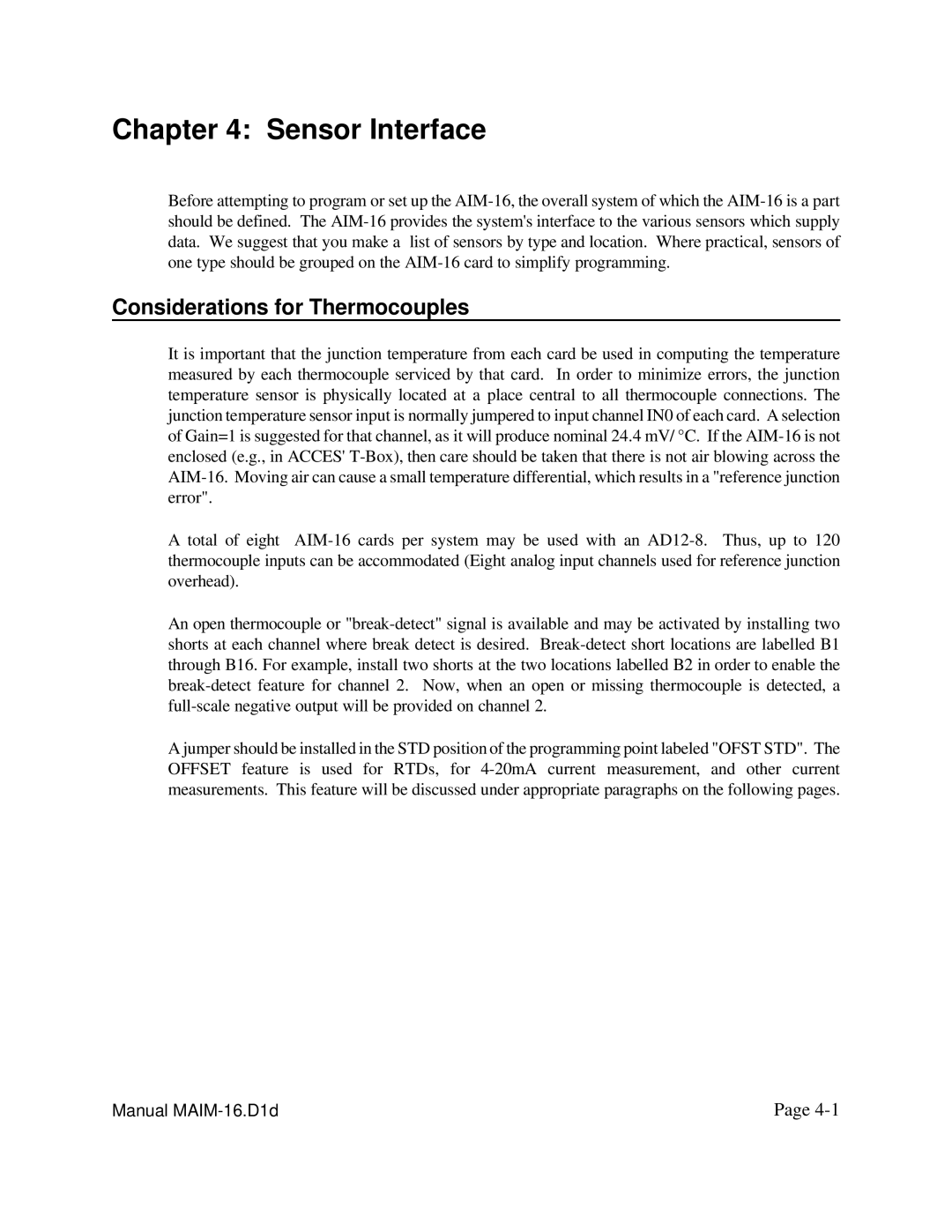
Chapter 4: Sensor Interface
Before attempting to program or set up the AIM-16, the overall system of which the AIM-16 is a part should be defined. The AIM-16 provides the system's interface to the various sensors which supply data. We suggest that you make a list of sensors by type and location. Where practical, sensors of one type should be grouped on the AIM-16 card to simplify programming.
Considerations for Thermocouples
It is important that the junction temperature from each card be used in computing the temperature measured by each thermocouple serviced by that card. In order to minimize errors, the junction temperature sensor is physically located at a place central to all thermocouple connections. The junction temperature sensor input is normally jumpered to input channel IN0 of each card. A selection of Gain=1 is suggested for that channel, as it will produce nominal 24.4 mV/ °C. If the AIM-16 is not enclosed (e.g., in ACCES' T-Box), then care should be taken that there is not air blowing across the AIM-16. Moving air can cause a small temperature differential, which results in a "reference junction error".
A total of eight AIM-16 cards per system may be used with an AD12-8. Thus, up to 120 thermocouple inputs can be accommodated (Eight analog input channels used for reference junction overhead).
An open thermocouple or "break-detect" signal is available and may be activated by installing two shorts at each channel where break detect is desired. Break-detect short locations are labelled B1 through B16. For example, install two shorts at the two locations labelled B2 in order to enable the break-detect feature for channel 2. Now, when an open or missing thermocouple is detected, a full-scale negative output will be provided on channel 2.
A jumper should be installed in the STD position of the programming point labeled "OFST STD". The OFFSET feature is used for RTDs, for 4-20mA current measurement, and other current measurements. This feature will be discussed under appropriate paragraphs on the following pages.
Manual MAIM-16.D1d | Page 4-1 |
